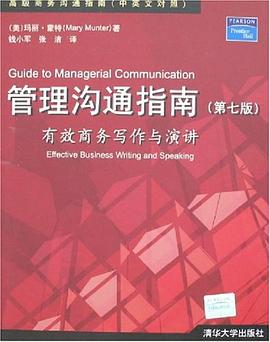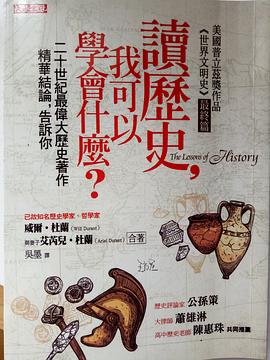实验心理学
内容简介
由坎特威茨、罗迪格和埃尔姆斯三位美国著名心理学家倾力合作的《实验心理学》堪称当代实验心理学教材的典范。本书正文部分共十五章,分为两个部分。前五章构成了第一部分,介绍了心理学研究中的基本问题,如科学与理论建构的一般问题,观察法、相关法和实验法的特点及其差异,研究中的道德问题以及如何阅读与撰写研究报告,等等。其余十章根据研究内容的划分构成了第二部分,介绍了实验方法在具体研究领域(如知觉、记忆、学习和思维)中的应用。将实验方法从大量的心理学史料和事实中提炼出来,将前五章介绍的方法有机地整合到真实的研究情境中,以使读者对方法的具体运用有切实的体会和更深入的认识,从而有助于系统掌握这些方法,提高研究技巧,加快成长进程。
......(更多)
作者简介
......(更多)
目录
导读
序言
术语表
第一部分 研究的基本问题
第1章 什么是科学心理学 4
1.1 对大千世界的探索 4
1.1.1 社会惰化 4
1.1.2 好奇心:科学的源泉 6
1.2 知识的来源 6
信念的确立 6
1.3 科学解释的性质 8
1.3.1 什么是理论 8
1.3.2 归纳法与演绎法 9
1.3.3 从理论到假设 12
1.3.4 评估理论 14
1.3.5 中介变量 15
1.3.6 徜徉于心理学理论中的“狐狸”
与“刺猬” 17
1.4 心理科学 17
心理学与现实世界 18
小结 21
讨论题目 21
网络资源 22
第2章 研究技术:观察与相关 25
2.1 自然观察法 26
2.1.1 我们观察什么 28
2.1.2 反应性 29
2.1.3 个案研究 31
2.1.4 调查研究 32
2.1.5 自然观察法的优缺点 33
2.2 相关研究法 35
2.2.1 列联研究 35
2.2.2 相关研究 37
2.2.3 相关系数 37
2.2.4 复相关 42
2.2.5 原因:一个注解 44
小结 46
讨论题目 47
网络资源 48
实验室资源 48
第3章 研究技术:实验 51
3.1 什么是实验 52
3.1.1 实验的优点 52
3.1.2 为什么做实验 53
3.2 变量 54
3.2.1 自变量 54
3.2.2 因变量 55
3.2.3 控制变量 56
3.2.4 变量命名 56
3.2.5 多个自变量 57
3.2.6 多个因变量 61
3.3 实验设计 61
3.3.1 被试间设计 62
3.3.2 被试内设计 62
3.3.3 小样本设计 64
3.3.4 混合设计 64
3.3.5 控制条件 64
3.3.6 陷阱 65
3.3.7 准实验 68
3.4 从问题到实验 72
3.5 数据 73
3.5.1 获得数据 73
3.5.2 分析数据 74
3.5.3 报告数据 75
小结 75
讨论题目 76
网络资源 77
第4章 心理学研究的道德 80
4.1 以人为被试的研究 80
4.1.1 知情同意与欺瞒 83
4.1.2 退出研究的自由 84
4.1.3 免遭伤害的保护和研究通告 84
4.1.4 消除有害后果 85
4.1.5 保密 85
4.2 以动物为被试的研究准则 86
4.2.1 反对以动物作为研究对象的观点 86
4.2.2 支持以动物作为研究对象的观点 87
4.2.3 研究中使用动物的指导原则 88
4.3 科学欺骗 89
4.4 道德实践的监督 91
小结 92
讨论题目 92
网络资源 93
建议阅读材料 93
课后练习:理解并记住知情同意协议 94
第5章 如何阅读和撰写研究报告 97
5.1 如何进行文献检索 98
5.2 论文的各部分 98
5.2.1 题目和作者 98
5.2.2 摘要 99
5.2.3 引言 99
5.2.4 方法 99
5.2.5 结果 99
5.2.6 讨论 101
5.2.7 参考文献 101
5.3 要求严格的读者使用的核对清单 102
5.3.1 引言 102
5.3.2 方法 102
5.3.3 结果 103
5.3.4 讨论 103
5.3.5 核对清单的小结 104
5.4 期刊论文的样例 105
5.5 研究报告撰写 113
5.5.1 格式 114
5.5.2 文稿样例 116
5.5.3 文风 116
5.5.4 文章发表 140
小结 141
网络资源 142
实验室资源 142
课后练习:文献检索 142
第二部分 实验心理学的
基本原则与实践
第6章 心理物理学 148
测量感觉 148
6.1 实验主题与研究范例 150
操作定义:阈限 150
变量介绍 151
6.2 实验主题与研究范例 162
量表:费希纳定律和史蒂文斯定律 162
6.3 实验主题与研究范例 166
小样本设计:心理物理法 166
从问题到实验 168
鸽子有视觉阈限吗 168
如何测量鸽子的视觉阈限 168
小结 168
讨论题目 169
网络资源 169
课后练习:韦伯定律 169
第7章 知觉 173
知觉问题 173
直接和间接知觉 173
意识和知觉 175
变量介绍 178
7.1 实验主题与研究范例 179
言语报告:无意识知觉 179
7.2 实验主题与研究范例 186
会聚操作:无意识知觉和有意识知觉 186
从问题到实验 191
颜色-距离错觉 191
小结 193
讨论题目 193
网络资源 194
实验室资源 194
课后练习:斯特鲁效应 194
第8章 注意和反应时 197
反应时ABC 197
8.1 实验主题与研究范例 199
因素混淆:单纯嵌入 199
变量介绍 200
8.2 实验主题与研究范例 203
因变量的选择:速度-准确性权衡 203
8.3 实验主题与研究范例 208
交互作用:认知控制 208
从问题到实验 210
测量注意 210
小结 211
讨论题目 211
网络资源 212
课后练习:速度-准确性权衡 212
第9章 条件反射与学习 215
条件反射的类型 216
经典性条件反射:能忆起巴甫洛夫的
名字吗 216
工具性(操作性)条件反射 218
变量介绍 220
9.1 实验主题与研究范例 221
被试内与被试间设计:刺激强度 221
9.2 实验主题与研究范例 226
平衡:同时对比 226
9.3 实验主题与研究范例 231
小样本设计:儿童的行为问题 231
从问题到实验 238
部分强化消退效应 238
小结 240
讨论题目 241
网络资源 242
课后练习:对强化结果的了解 242
第10章 记忆与遗忘 245
艾宾浩斯的贡献—当记忆还年轻的时候 246
记忆的类型 249
变量介绍 250
10.1 实验主题与研究范例 251
量表衰减效应:通道差异 251
10.2 实验主题与研究范例 255
结果的普遍性:加工水平 255
10.3 实验主题与研究范例 262
交互作用效应:内隐与外显记忆测验 262
从问题到实验 271
读优于听吗? 271
小结 273
讨论题目 274
网络资源 274
实验室资源 274
课后练习;记住9·11恐怖袭击 275
第11章 思维与问题解决 278
两种思维方法 280
桑代克的尝试与错误学习 280
柯勒的黑猩猩的顿悟 280
11.1 实验主题与研究范例 281
信度与重复:类比推理 281
变量介绍 283
11.2 实验主题与研究范例 290
实验控制:功能固着 290
11.3 实验主题与研究范例 294
言语报告:判断中的过于自信 294
从问题到实验 298
问题解决中的酝酿期 298
小结 300
讨论题目 301
网络资源 302
课后练习:证真偏见 302
第12章 个别差异与发展 305
个别差异的研究途径 306
个别差异的方法学途径 306
引起个别差异的变量 307
变量介绍 309
12.1 实验主题与研究范例 310
测量信度:智力与发展的研究设计 310
12.2 实验主题与研究范例 316
操作定义:人工智能 316
12.3 实验主题与研究范例 321
回归假象:教育评价 321
从问题到实验 325
动机与情绪在智力活动中起什么作用 325
小结 328
讨论题目 329
网络资源 329
课后练习:回归假象演示 330
第13章 社会影响 333
社会心理学的起源 334
13.1 实验主题与研究范例 336
实验控制:服从权威 336
变量介绍 337
鼓励服从的条件 341
13.2 实验主题与研究范例 344
要求特征和实验者偏差:催眠 344
13.3 实验主题与研究范例 347
现场研究:旁观者干预 347
13.4 实验主题与研究范例 351
选择因变量:测量刻板与偏见 351
从问题到实验 353
其他人在场如何影响个体在某一任务上
的成绩 353
小结 355
讨论题目 356
网络资源 357
实验室资源 357
课后练习:置身实验的难度 357
第14章 环境心理学 360
科学是通向真理的唯一途径吗 361
发现城市生活的真谛 362
14.1 实验主题与研究范例 364
结果的推广: 拥挤 364
变量介绍 365
14.2 实验主题与研究范例 371
准实验:噪声与认知绩效 371
14.3 实验主题与研究范例 372
道德问题:欺骗和欺瞒 372
从问题到实验 374
暴露于噪声中有害处吗 374
小结 376
讨论题目 376
网络资源 376
实验室资源 377
课后练习:噪声与记忆 377
第15章 人的因素 380
人的因素和人的行为 381
定义 381
用户第一 381
生命的价值 382
变量介绍 383
15.1 实验主题与研究范例 384
小样本设计:动态视敏度 384
15.2 实验主题与研究范例 386
因变量的选择:心理负荷 386
15.3 实验主题与研究范例 393
现场研究:中央高位刹车灯 393
从问题到实验 394
测量飞行员空中的心理负荷 394
小结 395
讨论题目 395
网络资源 396
课后练习:理解交通指示牌的含义 396
附录A 实验心理学:历史回顾 400
A.1 实验心理学的起源:哲学与生理学 400
赫尔姆霍茨的贡献 402
A.2 早期的科学心理学 402
A.2.1 韦伯 403
A.2.2 费希纳 403
A.2.3 冯特 404
A.2.4 艾宾浩斯 404
A.3 心理学流派 404
A.3.1 构造主义:心理生活的结构 404
A.3.2 机能主义:心理的机能 405
A.3.3 行为主义:拒绝心理的解释 406
A.3.4 格式塔心理学:整体知觉 407
A.4 一些现代趋向 408
A.4.1 第二次世界大战与心理学的扩展 408
A.4.2 认知心理学:心理的回归 408
A.4.3 认知神经科学:大脑的十年 409
A.4.4 专门化 410
小结 412
网络资源 413
参考文献 414
Contents
PART 1 FUNDAMENTALS OF RESEARCH
Chapter 1: Explanation in Scientific Psychology 4
Making Sense of the World 4
Sources of Knowledge 6
The Nature of the Scientific Explanation 8
The Science of Psychology 17
Summary 21
Discussion Questions 21
Web Connections 22
Chapter 2: Research Techniques: Observation and Correlation 25
Naturalistic Observation 26
The Relational Approach 35
Summary 46
Discussion Questions 47
Web Connections 48
Laboratory Resource 48
Chapter 3: Research Techniques: Experiments 51
What is an Experiment? 52
Variables 54
Experimental Designs 61
Data 73
From Problem To Experiment 73
Summary 75
Discussion Questions 76
Web Connections 77
Chapter 4: Ethics in Psychological Research 80
Research with Human Participants 80
Ethics in Research with Animals 86
Scientific Fraud 89
Monitoring Ethical Practices 91
Summary 92
Discussion Questions 92
Web Connections 93
Suggested Readings 93
Psychology in Action: Understanding and Remembering Consent Forms 94
Chapter 5: How to Read and Write Research Reports 97
How to do a Literature Search 98
The Parts of an Article 98
Checklist for the Critical Reader 102
A Sample Journal Article 105
Writing a Research Report 113
Summary 141
Web Connections 142
Laboratory Resource 142
Psychology in Action: A Literature Search 142
PART 2 PRINCIPLES AND PRACTICES
OF EXPERIMENTAL PSYCHOLOGY
Chapter 6: Psychophysics 148
Measuring Sensations 148
6.1 Experimental Topics and Research Illustrations 150
Operational Definition: Thresholds 150
Introducing the Variables 151
6.2 Experimental Topics and Research Illustrations 162
Measurement Scales: Fechner誷 Law and Stevens?Law 162
6.3 Experimental Topics and Research Illustrations 166
Small-n Design: Psychophysical Methods 166
From Problem to Experiment: The Nuts and Bolts 168
Do Pigeons Have Vision Thresholds? 168
How Can We Measure a Pigeon誷 Visual Threshold? 168
Summary 168
Discussion Questions 169
Web Connections 169
Psychology in Action: Weber誷 Law 169
Chapter 7: Perception 173
Issues in Perception 173
Direct and Indirect Perception 173
Awareness and Perception 175
Introducing the Variables 178
Dependent Variables 178
Independent Variables 178
Control Variables 178
7.1 Experimental Topics and Research Illustrations 179
Verbal Report: Perception without Awareness 179
7.2 Experimental Topics and Research Illustrations 186
Converging Operations: Perception without Awareness and Perception with Explicit Awareness 186
From Problem to Experiment: The Nuts and Bolts 191
The Color-Distance Illusion 191
Summary 193
Discussion Questions 193
Web Connections 194
Laboratory Resource 194
Psychology in Action: The Stroop Eddect 194
Chapter 8: Attention and Reaction Time 197
The ABC of Reaction Time 197
8.1 Experimental Topics and Research Illustrations 199
Confounding: Pure Insertion 199
Introducing the Variables 200
8.2 Experimental Topics and Research Illustrations 203
Selection of the Dependent Variable: Speed-Accuracy Trade-Off 203
8.3 Experimental Topics and Research Illustrations 208
Interaction Effects: Cognitive Control 208
From Problem to Experiment: The Nuts and Bolts 210
Measuring Attention 210
Summary 211
Discussion Questions 211
Web Connections 212
Psychology in Action: Speed-Accuracy Trade-off 212
Chapter 9: Conditioning and Learning 215
Types of Conditioning 216
Classical Conditioning: Does the Name Pavlov Ring a Bell? 216
Instrumental (Operant) Conditioning 218
Introducing the Variables 220
9.1 Experimental Topics and Research Illustrations 221
Within- and Between-Subjects Designs: Stimulus Intensity 221
9.2 Experimental Topics and Research Illustrations 226
Counterbalancing: Simultaneous Contrast 226
9.3 Experimental Topics and Research Applications 231
Small-n Designs: Behavior Problems in Children 231
From Problem to Experiment: The Nuts and Bolts 238
The Partial Reinforcement Extinction Effect 238
Summary 240
Discussion Questions 241
Web Connections 242
Psychology in Action: Knowledge of Results as Reinforcement 242
Chapter 10: Remembering and Forgetting 245
Ebbinghaus誷 Contribution—When Memory was Young 246
Varieties of Memory 249
Introducing the Variables 250
10.1 Experimental Topics and Research Illustrations 251
Scale Attenuation: Modality Differences 251
10.2 Experimental Topics and Research Illustrations 255
Generality of Results: Levels of Processing 255
10.3 Experimental Topics and Research Illustrations 262
Interaction Effects: Implicit and Explicit Memory Tests 262
From Problem to Experiment:The Nuts and Bolts 271
Which Is More Effective, Reading or Listening? 271
Summary 273
Discussion Questions 274
Web Connections 274
Laboratory Resources 274
Psychology in Action: Remembering The 9/11 Terrorist Attacks 275
Chapter 11: Thinking and Problem Solving 278
Two Approaches to Th inking 280
Thorndike誷 Trial-and-Error Learning 280
Insight in K歨ler誷 Chimpanzees 280
11.1 Experimental Topics and Research Illustrations 281
Reliability and Replication: Analogical Reasoning 281
Introducing the Variables 283
11.2 Experimental Topics and Research Illustrations 290
Experimental Control: Functional Fixedness 290
11.3 Experimental Topics and Research Illustrations 294
Verbal Reports: Overconfidence in Judgments 294
From Problem to Experiment: The Nuts and Bolts 298
Incubation in Problem Solving 298
Summary 300
Discussion Questions 301
Web Connections 302
Psychology in Action: Confirmation Bias 302
Chapter 12: Individual Differences and Development 305
Approaches to Individual Differences 306
Methodological Approaches to Individual Differences 306
Variables Leading to Individual Differences 307
Introducing the Variables 309
12.1 Experimental Topics and Research Illustrations 310
Reliability of Measures: Intelligence and Developmental Research Designs 310
12.2 Experimental Topics and Research Illustrations 316
Operational Definitions: Intelligence 316
12.3 Experimental Topics and Research Illustrations 321
Regression Artifacts: Educational Assessment 321
From Problem to Experiment: The Nuts and Bolts 325
What Roles Do Motivation and Emotion Play in Intellectual Performance? 325
Summary 328
Discussion Questions 329
Web Connections 329
Psychology in Action: A Demonstration of Regression Artifacts 330
Chapter 13: Social Psychology 333
The Origins of Social Psychology 334
13.1 Experimental Topics and Research Illustrations 336
Experimental Control: Obedience to Authority 336
Introducing The Variables 337
Conditions Encouraging Obedience 341
13.2 Experimental Topics and Research Illustrations 344
Demand Characteristics and Experimenter Bias: Hypnosis 344
13.3 Experimental Topics and Research Illustrations 347
Field Research: Bystander Intervention 347
13.4 Experimental Topics and Research Illustrations 351
Choosing the Dependent Variable: Measuring Stereotypes and Prejudice 351
From Problem to Experiment: The Nuts and Bolts 353
How Does the Presence of Other People Affect an Individual誷 Performance on a Task? 353
Summary 355
Discussion Questions 356
Web Connections 357
Laboratory Resources 357
Psychology in Action: The Power of Being in an Experiment 357
Chapter 14: Environmental Psychology 360
Is Science the Only Path to Truth? 361
Discovering the Truth about City Life 362
14.1 Experimental Topics and Research Illustrations 364
Generalization of Results: Crowding 364
Introducing the Variables 365
14.2 Experimental Topics and Research Illustrations 371
Quasi-Experiments: Noise and Cognitive Performance 371
14.3 Experimental Topics and Research Illustrations 372
Ethical Issues: Deception and Concealment 372
From Problem to Experiment: The Nuts and Bolts 374
Is Exposure to Noise Bad for You? 374
Summary 376
Discussion Questions 376
Web Connections 376
Laboratory Resources 377
Psychology in Action: Noise and Memory 377
Chapter 15: Human Factors 380
Human Factors and Human Behavior 381
Definition 381
Honor Thy User 381
The Value of Life 382
Introducing the Variables 383
15.1 Experimental Topics and Research Illustrations 384
Small-n Design: Dynamic Visual Acuity 384
15.2 Experimental Topics and Research Illustrations 386
Selection of Dependent Variable: Mental Workload 386
15.3 Experimental Topics and Research Illustrations 393
Field Research: The Centered High-Mounted Brake Light 393
From Problem to Experiment: The Nuts and Bolts 394
Measure Pilot Mental Workload in Flight 394
Summary 395
Discussion Questions 395
Web Connections 396
Psychology in Action: Understanding Traffic Sign Symbols 396
Appendix A: Experimental Psychology: A Historical Sketch 400
Origins of Experimental Psychology: Philosophy and Physiology 400
Early Scientific Psychology 402
Schools of Psychology 404
Some Modern Trends 408
Summary 412
Web Connections 413
References 414
......(更多)
读书文摘
一般的做法是要求被试跟踪这个信息,比如大声重复,以保证被试真正听见传到一个耳朵的声音。
当人们提到注意,总是说把它与两种特征联系起来:选择性与容量有限性。 在认知神经科学中,我们把注意定义为大脑中的一组影响我们的心理活动及行动优先次序的神经网络。 信息加工的核心思想是在分析心理活动时把心理分成不同的包括对世界表征的形成、保持及转换的子系统。
“狐狸有多知,刺猬有大知。”——阿基洛科斯(Archilocus) 心理学理论的多元取向(狐狸)和一元取向(刺猬)。
当科学试图描述较多的变量及其关系时,中介变量就显得更有效和更必要了。
......(更多)






